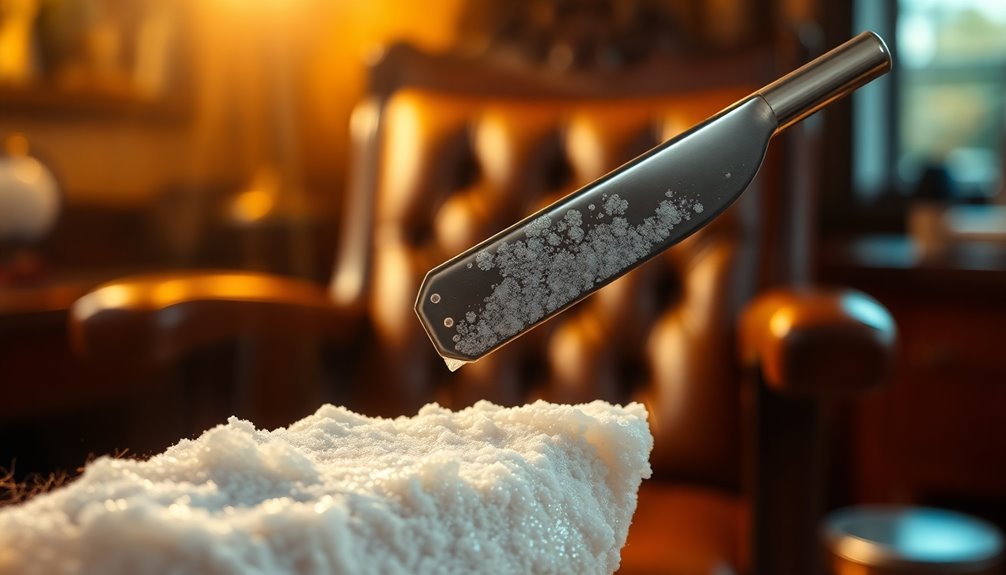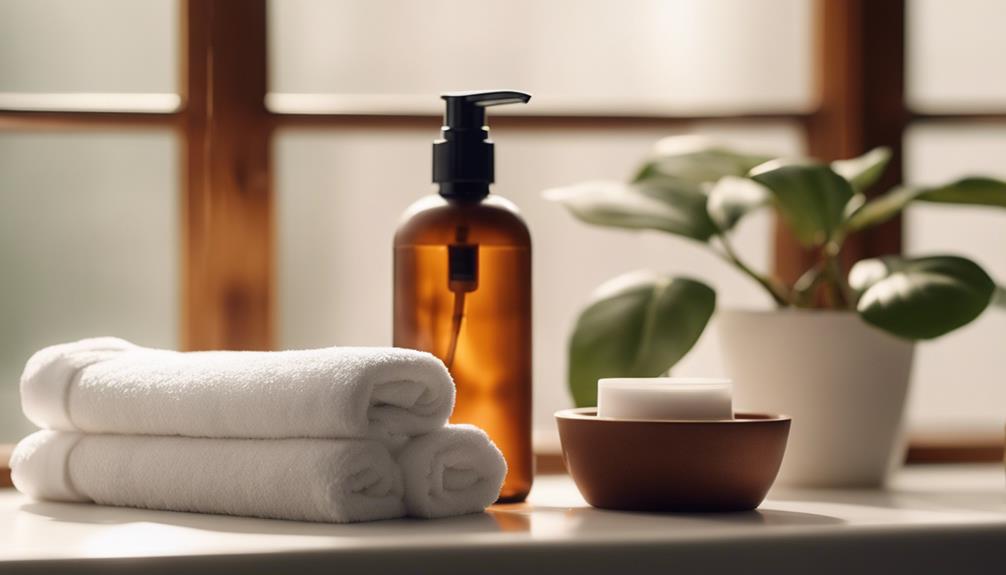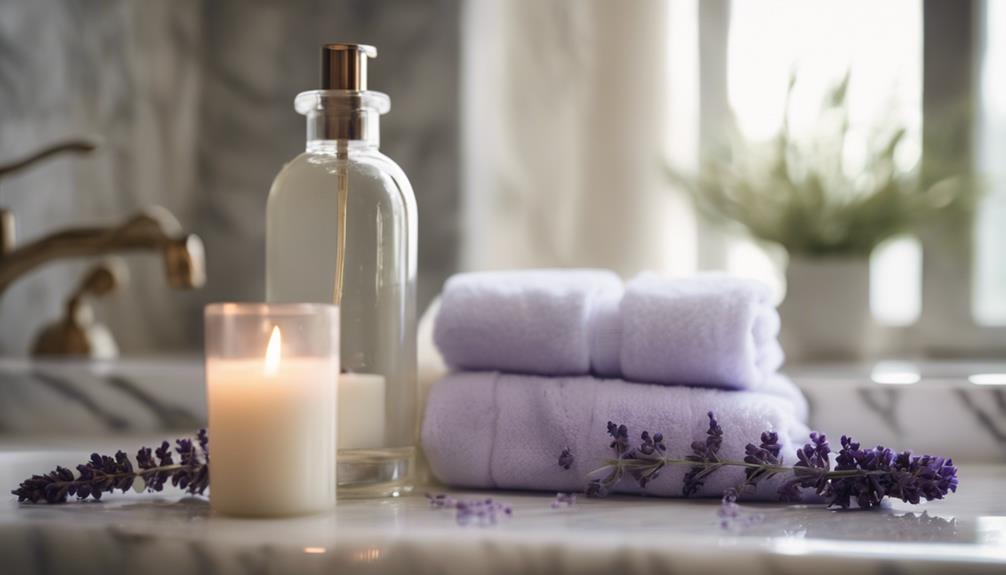To get the smoothest face ever, you've got to embrace a few barber secrets. Start with pre-shave prep: warm water or hot towels soften hair, cutting the force needed by 70%. Remember to hydrate your skin, too—nobody likes irritation! Shave with, across, and finally against the grain for that ultra-close feel. Avoid common mistakes like rushing or skipping skin prep, which can lead to nicks and cuts. Don't forget post-shave essentials: rinsing with cold water and applying a soothing balm will keep redness at bay. Stick around, and you'll uncover even more tips to elevate your shaving game!
Key Takeaways
- Hydrate your skin with warm water or hot towels before shaving to soften hair and reduce irritation significantly.
- Invest in high-quality shaving products, like gels and pre-shave oils, for enhanced glide and protection against nicks.
- Always shave with the grain first, then across, and finally against the grain for a closer and smoother finish.
- Exfoliate regularly to remove dead skin cells and prevent ingrown hairs, promoting healthier and smoother skin.
- Use soothing aftershave balms or moisturizers post-shave to hydrate and support skin recovery, minimizing irritation.
Barber Experience and Environment
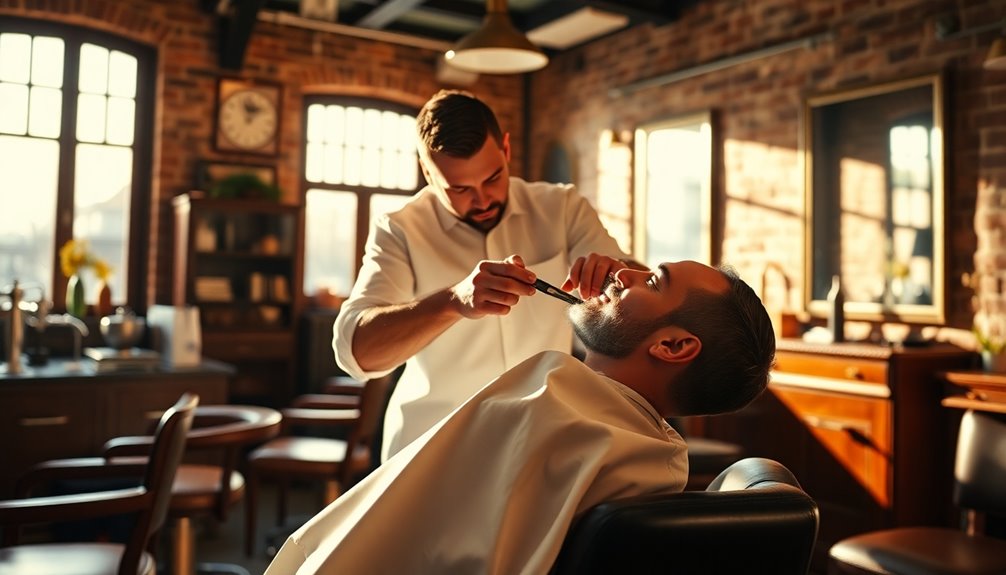
Creating the perfect grooming experience starts with the right barber environment. When you step into barber shops, you want to feel a sense of luxury and comfort, right? The ambiance plays a significant role in how you perceive your grooming experience. A quality barber shop offers a cozy chair and a soothing atmosphere, making it easy for you to relax.
Barbers who take their time with each service enhance that enjoyment, especially when using the right shaving tools. For instance, a hot towel treatment can work wonders, particularly for those with sensitive skin, as it prepares your face for a smooth shave.
You’ll find that engaging in conversations with your barber not only makes the time fly but also adds to the overall satisfaction of your visit. Plus, observing the techniques and results of other clients can give you confidence in your barber’s skills. Additionally, sharing your thoughts and preferences can lead to personalized advice that enhances your haircut experience. For instance, if you’re interested in understanding fade haircuts, your barber can provide tips on what works best for your hair type and face shape. This exchange not only builds rapport but also ensures that you leave the salon feeling confident and satisfied with your look.
You're not just getting a shave; you're entering a space where your grooming needs are prioritized. So, the next time you're at your favorite barber shop, remember that the right environment can make all the difference in achieving that smooth, polished look you desire!
Pre-Shave Preparation Techniques
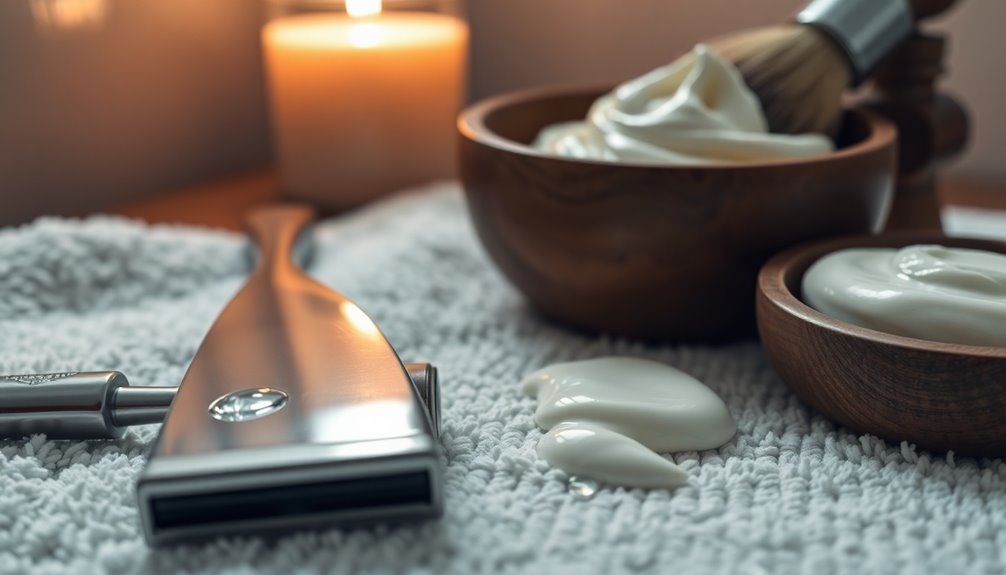
Before you even pick up a razor, let's talk about how to prep your skin for the ultimate shave.
Hydrating your face with warm water or a hot towel can soften your hair and make the whole process smoother.
Plus, using a quality shaving gel not only protects your skin but also makes it feel like you're treating yourself to a mini spa session!
Hydration and Warmth
Proper hydration and warmth can make a significant difference in your shaving routine. Before you even think about applying that shave gel, spend at least three minutes hydrating your skin with warm water or a hot towel. This simple step can soften your facial hair and reduce the cutting force needed by up to 70%.
If you want to take it up a notch, consider utilizing steam from a hot shower or a specialized vaporizer. The steam helps to prepare your hair for shaving, leading to a smoother experience.
Don't forget about moisturizer! Applying it to your facial hair before shaving not only softens the hair but also makes the entire process much more comfortable.
Plus, knowing the direction of your hair growth is essential. It allows you to adjust your technique for an even closer shave.
Remember, ensuring your skin is adequately warmed and hydrated minimizes the risk of irritation, making your shaving experience far more enjoyable.
Quality Shaving Products
Achieving a smooth shave hinges on the quality of the products you use. Start with hydrating your skin using warm water or a hot towel for at least three minutes. This simple step can soften your facial hair considerably, reducing the cutting force needed by up to 70%. Additionally, maintaining good air quality can also benefit your skin, as it reduces exposure to pollutants that may irritate it. Furthermore, staying adequately hydrated can help improve your skin's elasticity, making for a more comfortable shaving experience and promoting better overall skin health. Regular use of an air purifier can enhance your shaving environment by improving indoor air quality, reducing irritants that may affect your skin. Moreover, maintaining proper oral hygiene can also contribute to your overall skin health, as poor dental care can lead to skin irritations.
Next, apply a quality shaving gel or cream. This not only enhances glide but also protects your skin from nicks and helps prevent razor burn.
Consider adding a pre-shave oil to your routine. This creates a moisture-locking barrier that allows for an even closer shave without irritating your skin. Remember, sharp razor blades are essential—dull blades can cause discomfort and ineffective shaving. A clean, sharp blade is your best friend for a close shave.
Don't forget to exfoliate! A gentle scrub before shaving removes dead skin cells and helps prevent those annoying ingrown hairs, contributing to an overall smoother experience. Additionally, keeping your shaving environment as clean as possible can help reduce airborne pathogens that might irritate your skin after shaving.
Shaving Against the Grain
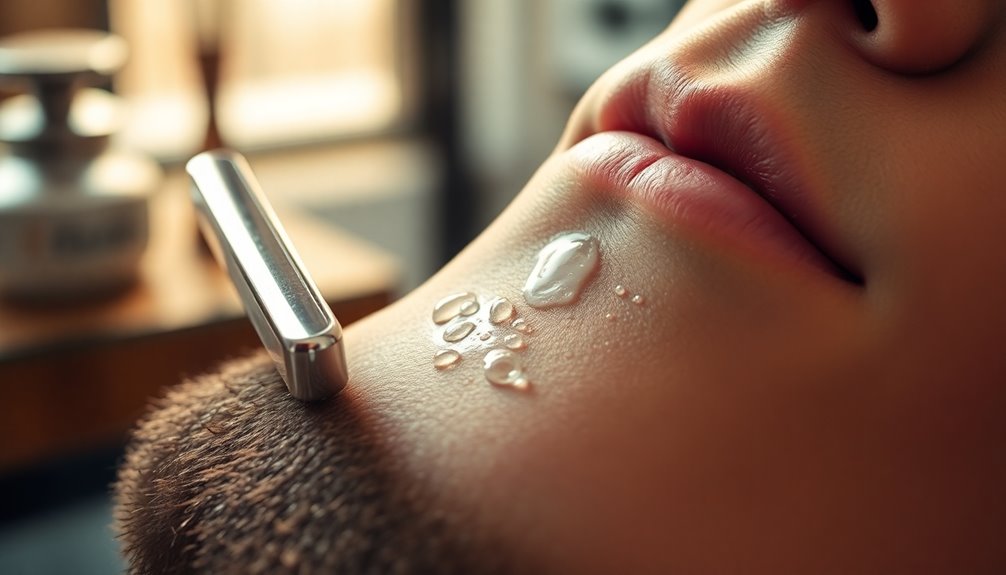
Shaving against the grain can give you that coveted close shave, cutting hair at a sharper angle for a longer-lasting smoothness. To achieve this, you first need to understand the direction of hair growth. Proper preparation is key, so hydrate your skin with warm water or a hot towel for at least three minutes. This helps soften the hair and prepares your skin for the fresh blade.
When you start shaving, utilize light, gentle strokes to minimize irritation. Pressing too hard can cause damage, leading to unsightly nicks or razor burn. If you've got sensitive skin, this technique mightn't be your best friend, as it carries a higher risk of causing irritation or even ingrown hairs.
To maximize your results, consider a systematic approach. Start by shaving with the grain, then across it, and finally against it. This method enhances the effectiveness of your shave while also keeping irritation at bay.
Common Shaving Mistakes
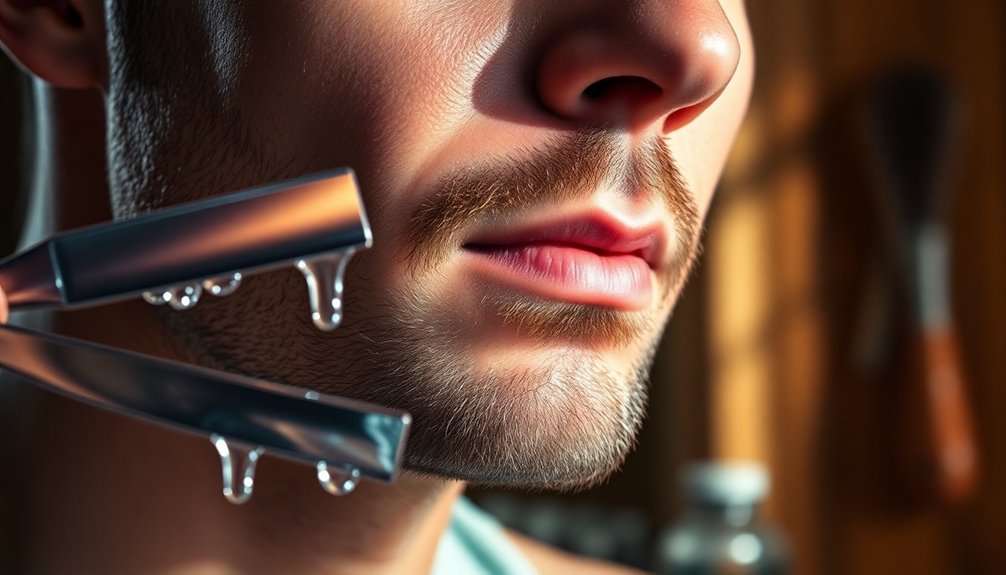
When it comes to shaving, rushing the process can really mess things up, leaving you with cuts and missed spots.
Plus, if you skip proper skin preparation, you're just asking for irritation and discomfort later on.
Rushing the Shave
Many people underestimate the importance of taking their time during a shave, but rushing can lead to a host of common mistakes. When you rush, you're more likely to end up with nicks and cuts, making your shaving experience anything but smooth. You might feel that urgent need to shave, but remember, quick strokes often miss spots, leaving you with an uneven finish.
Moreover, hurrying through your shave means you might neglect to rinse your blade frequently. A clogged blade can irritate your skin and hinder a clean shave. If you're shaving at the end of your shower, you're missing out on the softness of your hair, which is vital for a close shave. Rushing this preparation phase can compromise the overall effectiveness of your shave.
Finally, skipping aftershave products because you're in a hurry can lead to painful post-shave irritation. Proper shaving techniques deserve your attention, so don't shortchange yourself.
Embrace the process, and you'll find that a little extra time spent can yield a much smoother and more enjoyable outcome. After all, your face deserves the best care!
Ignoring Skin Preparation
Before you glide that razor across your face, don't underestimate the power of proper skin preparation. Ignoring this essential step can turn your shave into a battle, especially in the neck area where hair can be tougher.
Shaving right after a hot shower works wonders, as the steam helps swell and soften your hair, making it easier to cut. If you skip this, you're going to face a rougher shave and potential irritation.
Rushing through the process? That's a recipe for cuts and missed spots. Take your time, and make sure you rinse your blade properly to avoid compromising your shave.
Afterward, don't forget to pamper your skin with aftershave products or moisturizer; neglecting this can lead to irritation that's no fun at all.
Finally, remember to shave in the direction of hair growth. It might feel faster to go against it, but doing so can irritate your skin and leave you with an uneven finish.
Post-Shave Care Essentials
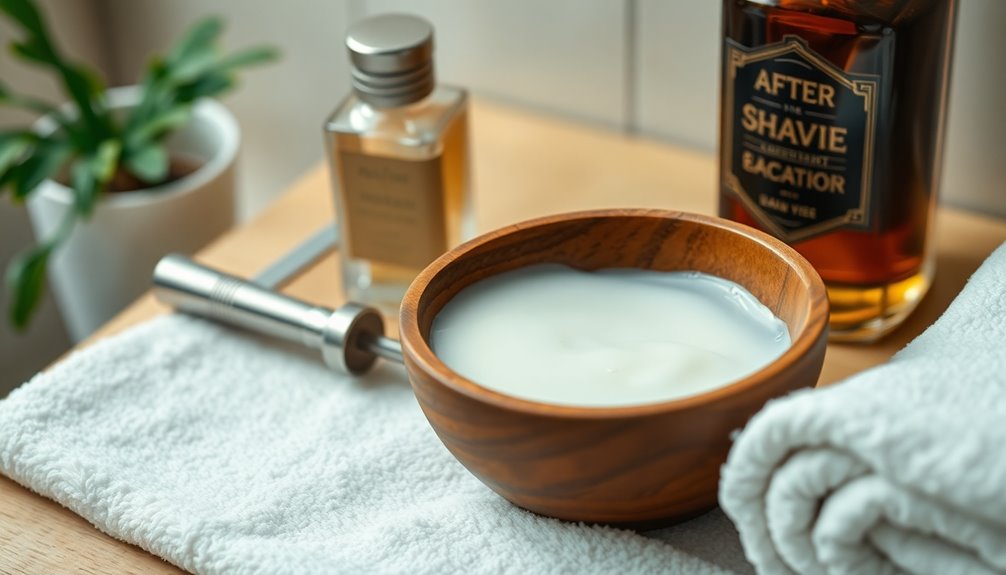
After shaving, taking the right steps in post-shave care can make all the difference in achieving a smooth, irritation-free face.
Start by rinsing your face with cold water; this simple act helps close your pores and reduces the risk of irritation and pesky ingrown hairs.
Next, reach for a soothing aftershave balm or moisturizer. Applying one of these will hydrate your skin and aid in recovery, minimizing any redness or discomfort you might feel.
If you're serious about preventing ingrown hairs, consider using products with glycolic or salicylic acids in your aftershave routine. These ingredients gently exfoliate your skin, keeping it smooth and clear.
Remember, moisturizing regularly after shaving is essential, as it supports your skin barrier and enhances overall health, giving you that coveted smooth appearance.
Don't forget to monitor your skin for any signs of irritation or redness after you shave. If you notice anything unusual, a topical treatment like hydrocortisone cream can help alleviate discomfort.
With these post-shave care essentials, you'll not only look great but also feel fantastic!
Choosing the Right Razor
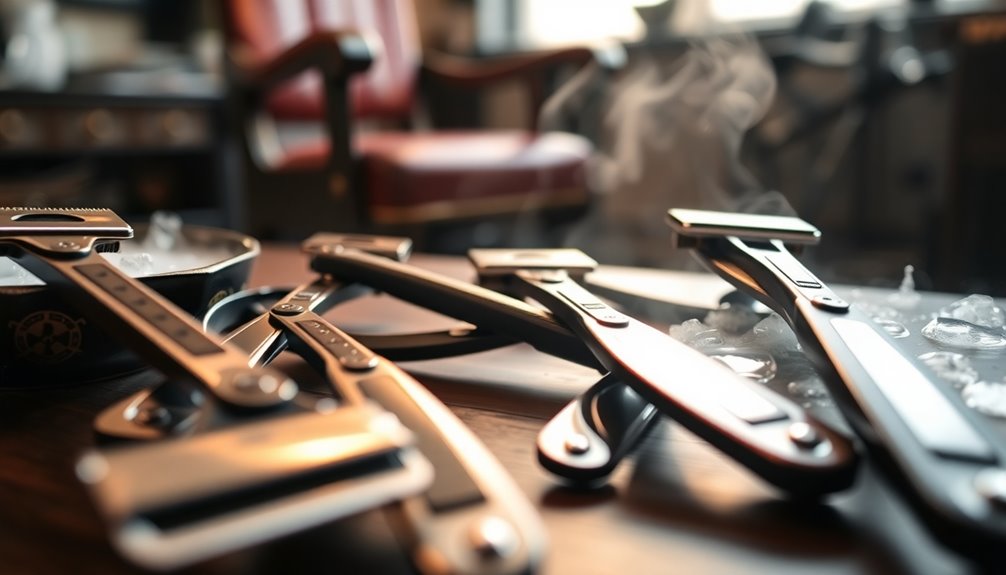
Choosing the right razor can make a substantial difference in your shaving experience and the health of your skin.
Whether you have sensitive skin or not, picking the right tool is essential for achieving that smooth face you desire. Here are a few tips to help you choose wisely:
- Understand Your Skin Type: If you have sensitive skin, consider using a single blade razor. It may take a bit more skill, but it can substantially reduce irritation compared to multi-blade options.
- Invest in Quality Razors: Higher-quality razors often provide better precision, which means fewer nicks and cuts. You deserve a razor that treats your skin well!
- Regularly Replace Dull Blades: Dull blades can lead to ineffective shaving and increased irritation. A good rule of thumb is to replace them every five shaves or more frequently in sensitive areas.
Frequently Asked Questions
How Do You Get the Smoothest Shave Ever?
To get the smoothest shave ever, start by hopping in a warm shower. The steam softens your hair, making it easier to cut.
Use a quality shave gel or cream for a slick glide, and remember to shave with the grain first.
Change your razor blade regularly—dull blades are a no-go!
After shaving, rinse with cold water and apply a soothing balm to keep your skin happy.
Enjoy your ultra-smooth face!
How to Get the Smoothest Shave Down There?
You might think shaving down there's intimidating, but it doesn't have to be!
Start by hydrating the area with warm water or a hot towel for a few minutes; it softens hair and makes the process smoother.
Use a quality shave gel for sensitive skin, and always shave in the hair growth direction first.
Light strokes with a clean razor minimize irritation.
Finish with a soothing balm to keep your skin happy and healthy!
Does Shaving Your Face Make It Smoother?
Yes, shaving your face can definitely make it smoother! As you glide that razor over your skin, it removes dead skin cells, giving you an instant fresh feel.
Plus, regular shaving encourages skin cell turnover, enhancing your texture over time.
Just remember to use a quality razor, shave with the grain, and follow up with a good moisturizer.
Your skin will thank you, leaving you looking sharp and feeling confident!
How to Make Your Face Smooth After Shaving?
Imagine your face as a canvas awaiting a masterpiece. After shaving, rinse with cold water to close those pores and shield your skin.
Don't skip the soothing aftershave balm; a little hydration goes a long way.
Exfoliate weekly to banish dead skin and prevent pesky ingrown hairs.
Always wield a sharp razor and glide on some quality shaving cream.
With these steps, your skin will feel like the smoothest canvas you've ever touched!
Conclusion
Now that you're armed with these shaving secrets, you can achieve a smooth face that's as satisfying as the first sip of your favorite coffee on a Monday morning. Remember, it's not just about the tools; it's about the technique and care you put into your routine. So, ditch those common mistakes, prep like a pro, and give your skin the love it deserves. With a little practice, you'll be on your way to shaving like a seasoned barber.
